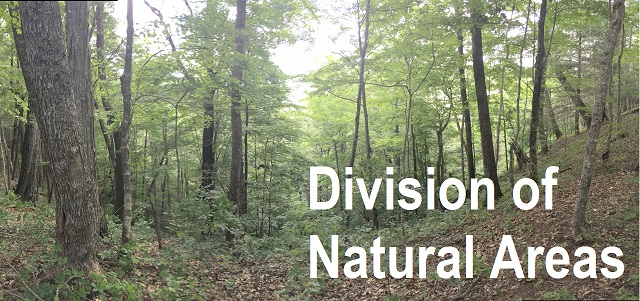Title
Three Decades of Overstory and Species Change in a Mixed Mesophytic Forest in Eastern Kentucky
Document Type
Article
Publication Date
6-2005
DOI
10.2179/0008-7475(2005)070[0115:tdooas]2.0.co;2
Abstract
The objectives of this study were to document changes, between 1971 and 1999, in overstory vegetation structure and composition at Lilley Cornett Woods (LCW), an old-growth mixed mesophytic forest in eastern Kentucky. Similar to other old-growth forests, overstory density (284 to 347 trees/ha) and basal area (26.4 to 29.9 m2/ha) have significantly increased during this time. The increase in density was primarily due to recruitment into the smallest overstory diameter-class (12.5-30.0 cm). Six species have comprised over 60% of total overstory importance since 1971; Fagus grandifolia has remained the most important species. The overstory composition in 1999 was not similar to 1971 (C = 63.4%) as several changes have occurred during the 28-year period, including increases in the importance of maples and eastern hemlock and decreases in oaks. These trends are consistent with other reports in the eastern United States.
Recommended Citation
Galbraith, S. L., & Martin, W. H. (2005). Three Decades of Overstory and Species Change in a Mixed Mesophytic Forest in Eastern Kentucky. Castanea, 70(2), 115-128. doi:10.2179/0008-7475(2005)070[0115:tdooas]2.0.co;2



Comments
"We wish to thank the numerous friends who helped with field work at Lilley Cornett Woods: Rain Storm, Mike Brotzge, Robert Watts, Todd Williams, Brian Cook, Greg Galbraith, Kyle Galbraith, Dr. William Bryant, Dr. Michael Held, Brandon Smith, and Daniel Kent. Also, many thanks goes to Ms. Ginny Scott, office manager in the Division of Natural Areas, for her continual support, and to Drs. Ross Clark and Guenter Schuster for their helpful comments on early drafts. For statistical assistance, special thanks goes to Dr. Robert Frederick for early analyses, and Qi Xia and Dr. John Kolassa (Rutgers University) for later revisions. Three reviewers added helpful comments for improvements to the draft. The primary author received assistance from the EKU Division of Natural Areas and Department of Biological Sciences (Teaching Assistantships, 1998-2000; Graduate Research Assistantship Award, 1999-2000).
This is Publication No.18 of Lilley Cornett Woods: Appalachian Research Station of Eastern Kentucky University, Richmond, Kentucky." (p. 125)